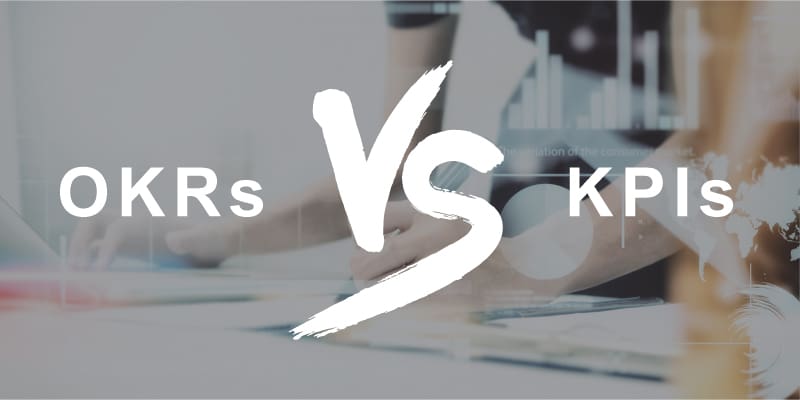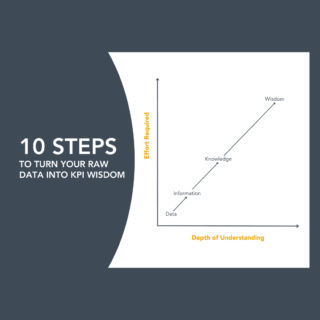Organizations have been struggling to set and measure their goals for as long as the planning industry has been around. Add the rapid growth that can occur in tech companies and goal setting can become even more difficult.
To deal with this challenge, Intel developed the OKR approach in the 1980’s. Google started using OKRs over 15 years ago when they had about 40 employees, and continue to use the approach today – rocketing it into the planning stratosphere.
So what is an OKR?
O=Objective
The objective is qualitative and answers the question, “What do we want or need to achieve?” It should be short (3-7 words) and written in a way that fits the company’s culture.
KR = Key Result
The Key Result is quantitative, meaning it has a statistic with a target built in, and teams are encouraged to have between 3-5. The purpose of the KR is (1) to track progress toward achieving the objective and (2) to set a target that is ambitious – often called a “moonshoot”.
How do OKRs compare to KPIs?
A KPI is only the measurement component of a planning and execution process, whereas OKRs are intended to be an overall goal management system.
K stands for Key and therefore should be tied to something strategically important (like an objective). PI stands for Performance Indicator; meaning it shows progress toward achieving the objective (like a KR).
The best OKR’s at the organizational and department level have KRs that are really KPIs with a stretch target. The exception is OKRs at the individual level, where the KR is more likely to be actions with a target of counting how much the activity is occurring.
OKR Example: Let’s take a closer look
Organizational or Department level OKR example
Objective: Wow our customers
Key Results:
- Reach a Net Promoter Score of 54%
- Increase the Average customer satisfaction rating to 8.6
- Increase customer retention to 94%
Individual level OKR example
Objective: Drive software demo 30-day free trial
Key Results:
- Write 12 blogs each month
- Develop a website pop up this quarter
- Connect with 500 target LinkedIn profiles this quarter
The OKR approach has some awesome Core Concepts
When putting OKRs into practice successfully, originators of the methodology recommend sticking to these core concepts:
- Keep the process simple and focused
- Use a shorter cycle for setting goals and achieving KRs: individual OKRs usually set each quarter and longer-term organizational level OKRs can be 6-12 months
- Create more team alignment and buy-in by combining a top-down planning approach with a bottom-up approach when setting OKRs
- Set your OKR target beyond what you think is achievable, and realize you won’t achieve them all (OKRs use a scoring system to emphasize this)
- Separate achieving the OKR from employee compensation, and don’t use OKRs as an employee evaluation tool
- Make OKRs transparent for all to see
- Commit to the structure and discipline with quarterly reviews.
The OKR approach helps overcome common planning bad habits that get in the way of rapidly growing business
These struggles include:
- Developing objectives without committing to measuring progress
- Never or rarely using your plan once you have created it
- Never or rarely adjusting your priorities once you have set them
- Developing plans that lack focus because they are too long and complex
- Cloistering your strategy for only those “in the know”
- Using targets and measures to judge employees.
So, what is a KPI?
- Many people don’ t know what a performance measure (KPI) really is. It is a quantification of objective evidence to the degree to which the performance result (what you are trying to achieve) is occurring over time
- KPIs should never be actions or milestones. Leave those for your project management.
- Remember that KPIs and Key Results are really the same thing at the organizational and department level.
Like Alex Moffat said on Quora:
“Comparing KPIs to OKRs is kind of like comparing apples to apple pies. 1) KPIs have been around a lot longer than OKRs 2) Now that we do have the delicious, flaky goal-pastry that is OKRs, KPIs are an ingredient within OKRs”.
No matter what you call them, teams often struggle to develop and use performance measures
Stacey Barr, creator of the PuMP® Performance Measure Blueprint, discovered through research that organizations struggle to develop and use measures because of 8 bad habits that are common practice.
If you follow the core concepts of OKR, some of these bad habits will be dealt with.
However, continue to watch out for these ones too:
- People brainstorm measures because they have no process for designing and choosing the strongest and most feasible measure for the objective.
- People guess when setting targets because they don’t have any baseline data showing what performance is currently doing (making the target meaningless)
- People compare two points of data (such as this month to last month) and draw conclusions that performance has changed when it is likely just natural variation
- People don’t put enough rigour into scoping the KR or KPI’s calculation and data sources so the measure becomes generic.
Should you switch your KPIs to OKRs?
Before you can answer this question, you need to first identify your current struggles with goal setting and tracking. If you want a more nimble goal-setting approach that is easy to talk about and has some awesome core concepts, then OKRs could be for you.
If you want more meaningful performance measures no matter what strategy planning and execution framework you are using, then your solution lies elsewhere.
Your organization likely needs to approach performance measurement as a process not an event, which means having a documented step-by-step approach to consistently design and use KPIs. To do this, your organization may need to increase your know-how for overcoming your measurement struggles with new techniques that address the root cause.
The PuMP® Performance Measure Blueprint was created by Australia’s performance measure specialist Stacey Barr. Louise Watson of Adura Strategy is Canada’s Official Partner and Licensed PuMP® Blueprint consultant.



